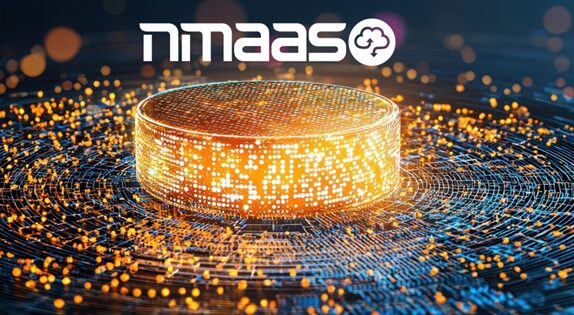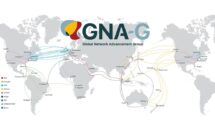Hands-on practical exercises are a very important aspect of today’s learning. They enable students to get valuable real-world experience with the topic at hand, allowing them to grasp relevant concepts more easily. While the experience of taking part in such practical exercises is undoubtedly rewarding, organizing them can be a challenging task for educators, especially when a large number of participants are involved. The exercise preparation usually entails hardware provisioning, configuration, application deployment, user management, per tenant isolation, and integration with existing platforms, such as learning management systems (LMS) and grading systems. Depending on the subject area and technical proficiency of the educators and supporting staff, this manual approach does not scale for moderate and large groups of students.
nmaas [https://docs.nmaas.eu/] is an orchestration system that can be used to simplify the organization of such hands-on exercises. nmaas has evolved from a system oriented towards the management and monitoring of network infrastructures into a full-fledged cloud platform that can be used for a variety of purposes, wherever a cloud environment with efficient management of application instances is required. This versatility is also reflected in the name change from NMaaS (Network Management as a Service) to simply nmaas.
The goal of nmaas vLAB [https://vlab.dev.nmaas.eu/] is to be applicable to as many educational scenarios as possible, allowing educators to more easily organize quality hands-on exercises, while also providing an easy to use environment to the lab participants to complete these exercises. To this end, the nmaas team has already introduced reference applications to the application portfolio to support multiple learning topics and related exercises, including:
- Application and network security – deployment of randomized, black-box containers for studying common software vulnerabilities;
- Software development – creation of personalized, portable development environments with all necessary services included, such as a web-based integrated development environments (IDEs), relational databases, message queues, application servers;
- Network monitoring and management – using various network management applications to monitor simulated or real infrastructure.
nmaas vLAB brings new and exciting features to the core nmaas platform to better organize hands-on exercises. It is now possible to deploy applications in a bulk fashion which is particularly useful for exercises where each participant needs to work with their own instance of a given application. As the nmaas portfolio supports many applications by default, virtual lab managers can create an infinite number of custom tailored application catalogs, restricting access to only those applications that are required for the course at hand. Recognizing that in many cases the available compute resources cannot satisfy the requirements for organizing a given hands-on exercises in which all involved students can take part in, nmaas also introduces a time-sharing concept relying on pausing idle application instances and reactivating them upon next user access attempt. This ensures that the same nmaas instance can be used for organizing virtual lab exercises for multiple courses at once, while safeguarding the integrity of the platform, limiting potential resource usage, and providing a simpler experience for virtual lab participants.
To better illustrate a potential vLAB usage scenario, imagine two distinct educators Alice and Bob, who would like to use nmaas for organizing virtual lab exercises for their courses – Introduction to Network Management and Advanced Web Development, respectively. Alice and Bob choose to use the managed nmaas vLAB instance offered as part of the GN5-2 project so that they do not have to deploy nor maintain any infrastructure on-premise. Both Alice and Bob export the list of course participants from their learning management system (LMS) and import it to nmaas using a dedicated form. They are now responsible for managing an nmaas domain group that represents their respective course comprising all individual student domains. In their dedicated domains, lab participants will deploy the necessary applications as part of the virtual lab exercise. As this is the first time that Alice’s and Bob’s students use nmaas, they opted to restrict the catalog of available applications using the nmaas domain group to only those required to complete the respective labs. Alice decides to let her students deploy the application instances by themselves, while Bob uses the bulk application deployment functionality to deploy personalized instances for each student ahead of time. Once the virtual lab exercise begins, students log in to the nmaas Portal. As Alice’s students have only local accounts since their institution is not part of the eduGAIN federation, they first reset their passwords upon initial login. Bob’s students use the single sign-on functionality, as their institution is on-boarded to eduGAIN. Alice’s students use the application deployment wizard to interactively deploy and configure their application instances. Bob’s students simply access the already deployed instances and begin their work. Even though Alice and Bob do not know each other (and most likely never will), the multi-tenant nmaas architecture allows them to use the same nmaas instance to organize virtual lab exercises without any friction.
All of the improvements done to the core nmaas orchestrator related to the vLAB use-case are available under the same open-source license as the rest of the software. Interested users can deploy nmaas on their own infrastructure today or get in touch with the nmaas team if they are interested in conducting a small-scale vLAB pilot on the managed nmaas instance provided within the GN5-2 project. For any questions the nmaas team is also available on the newly created nmaas Discord server [https://discord.com/invite/CZzvZH2TAe].







